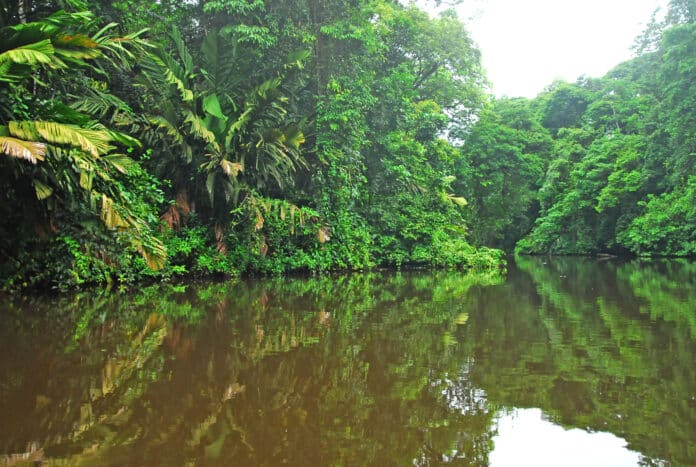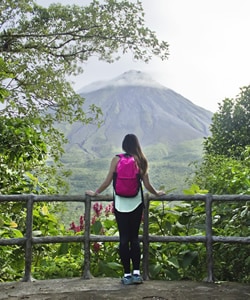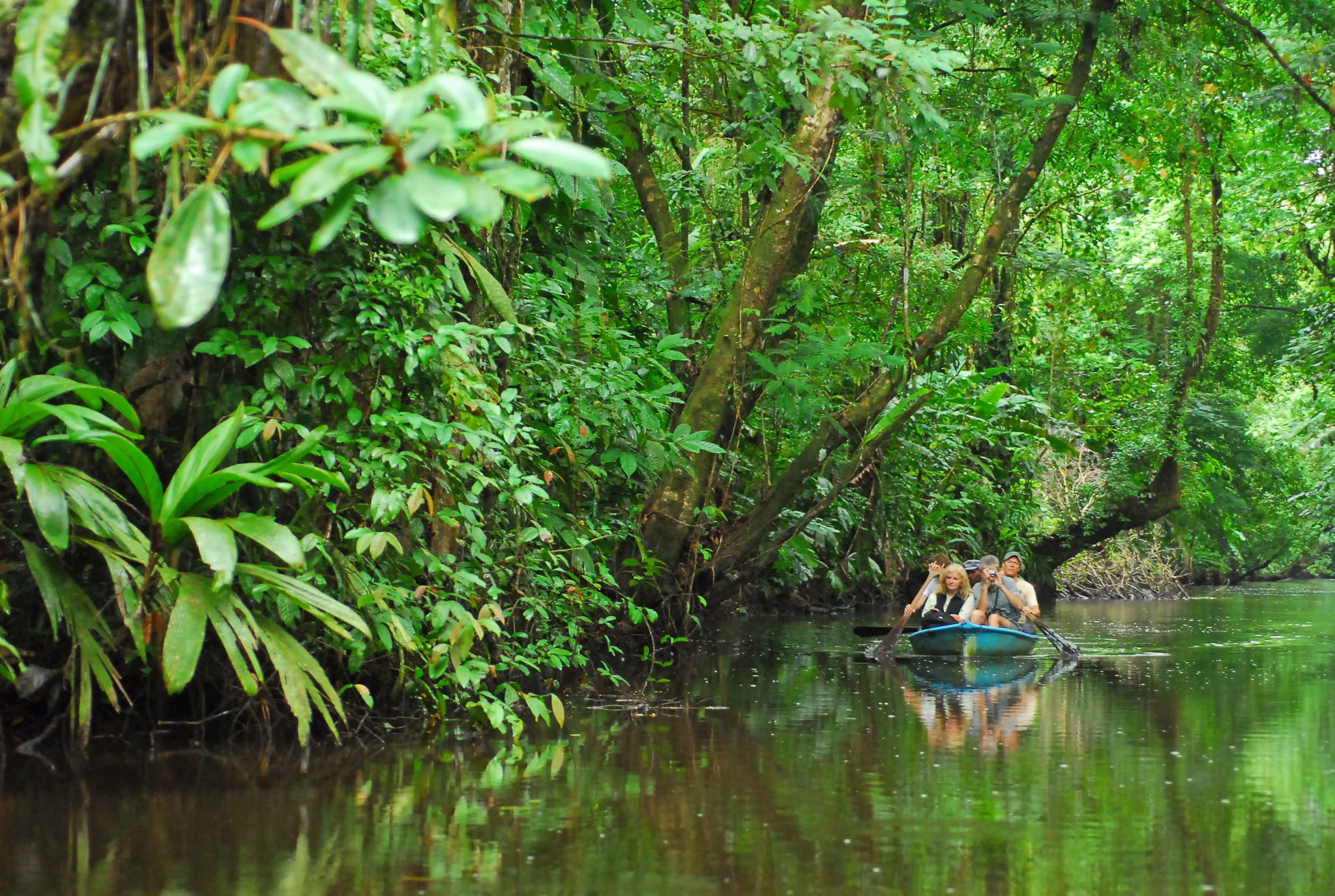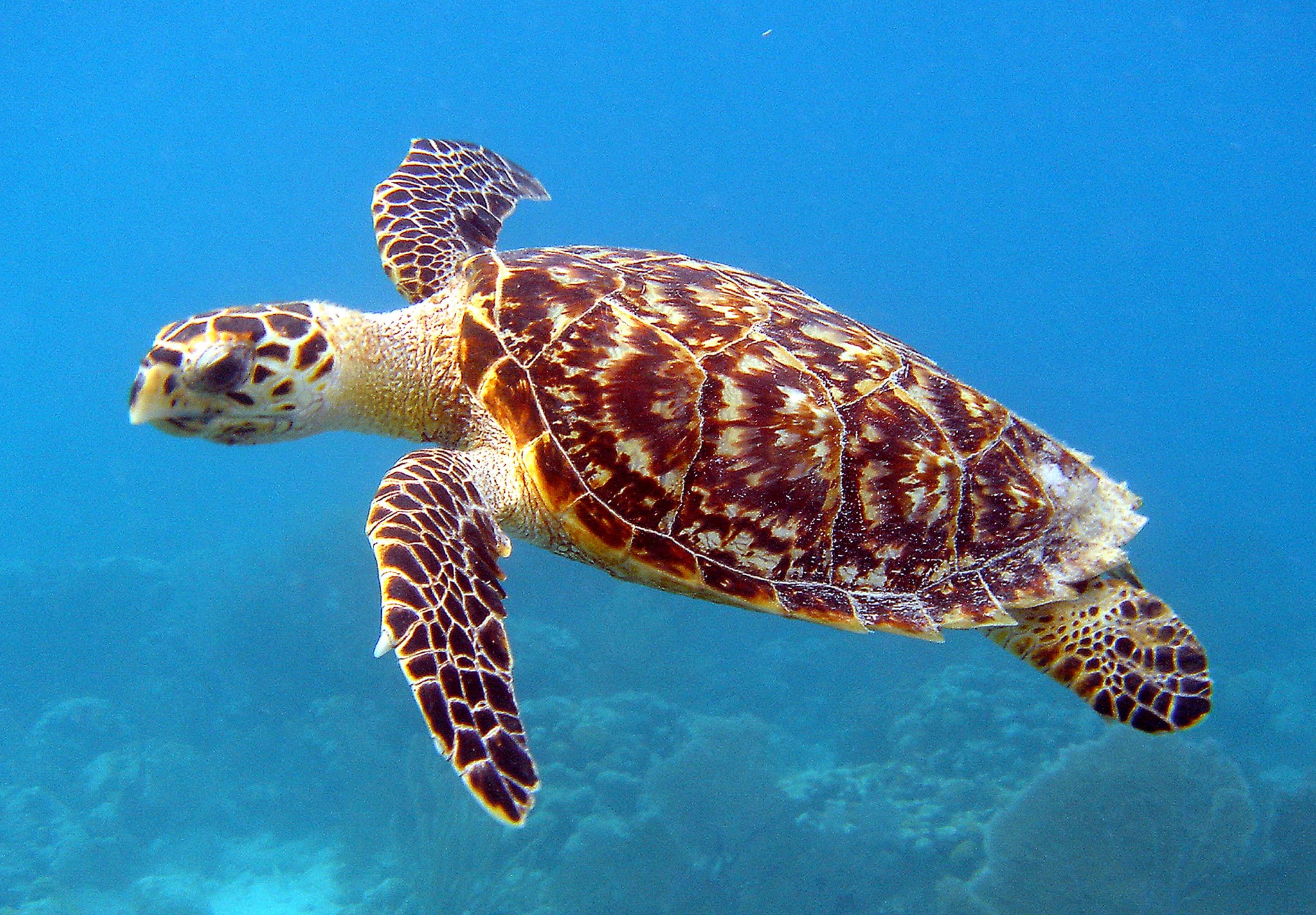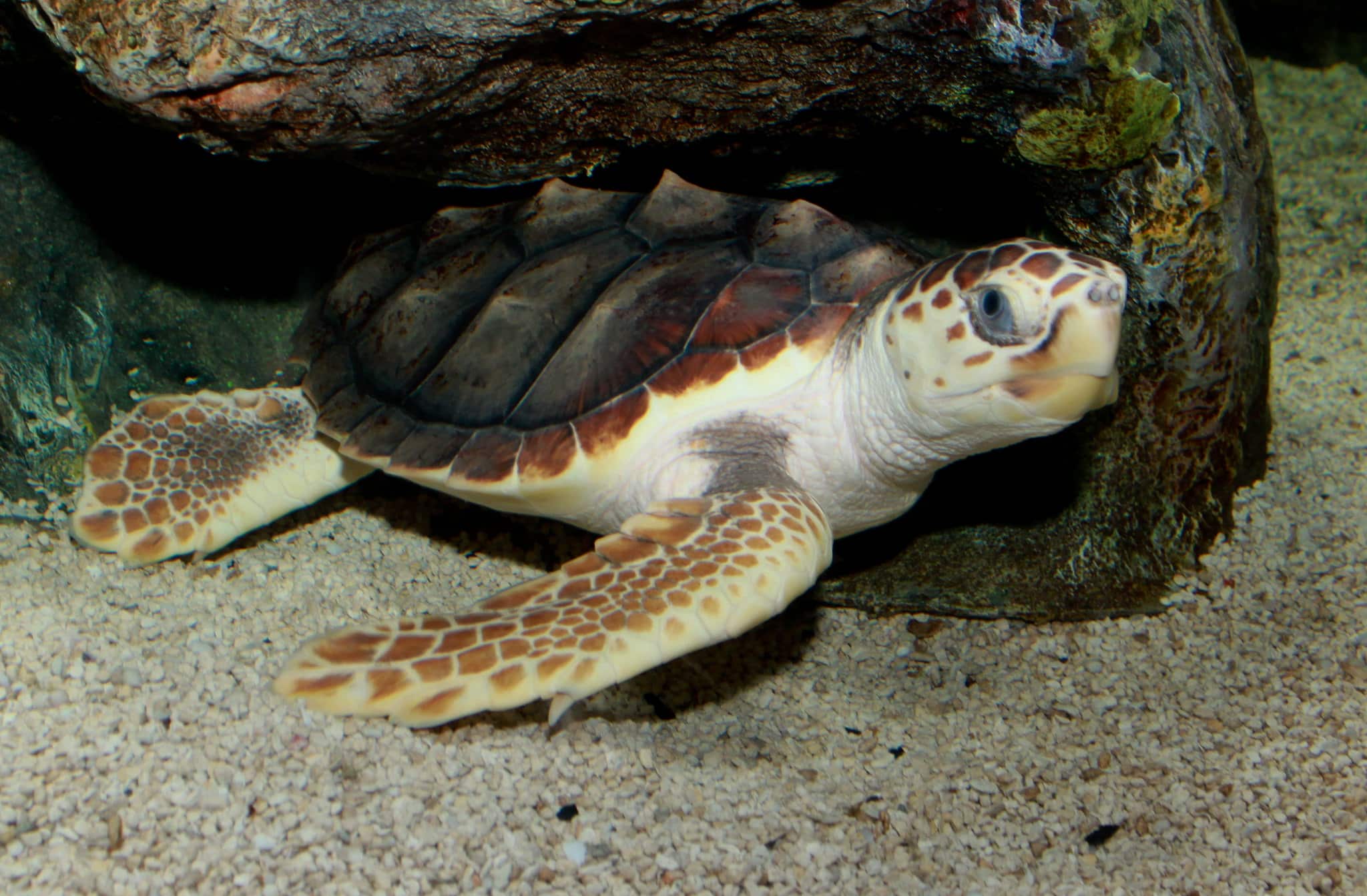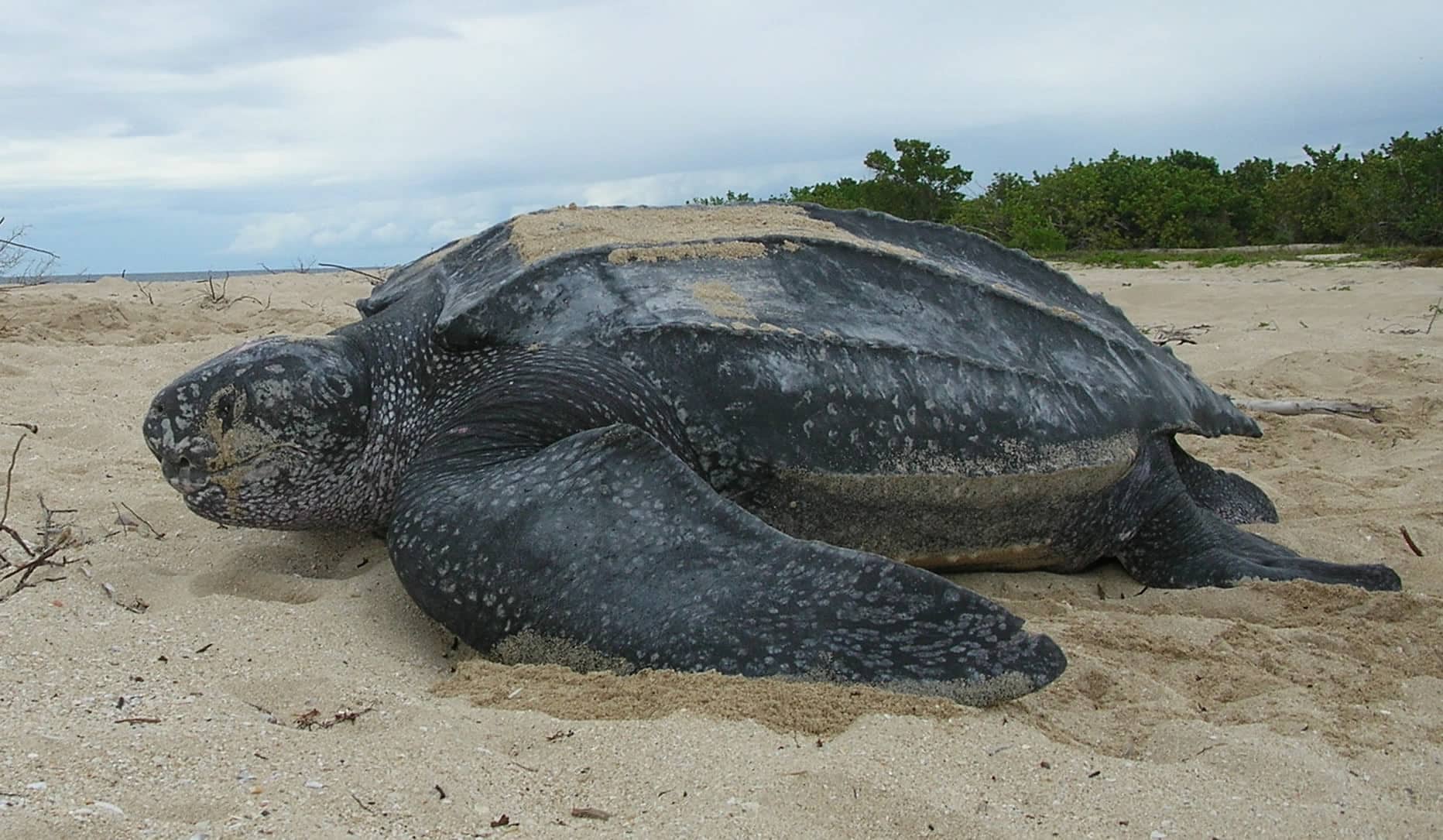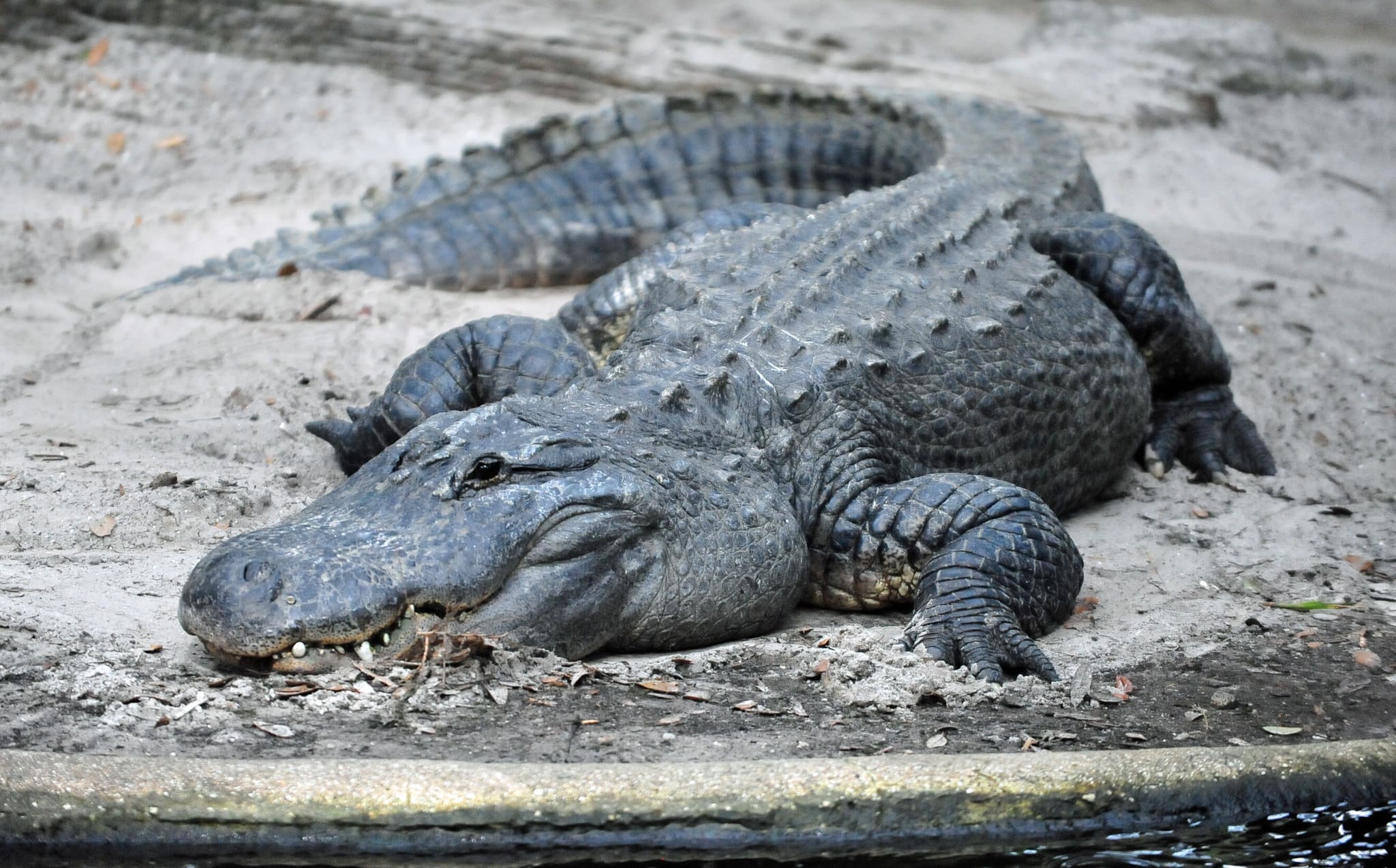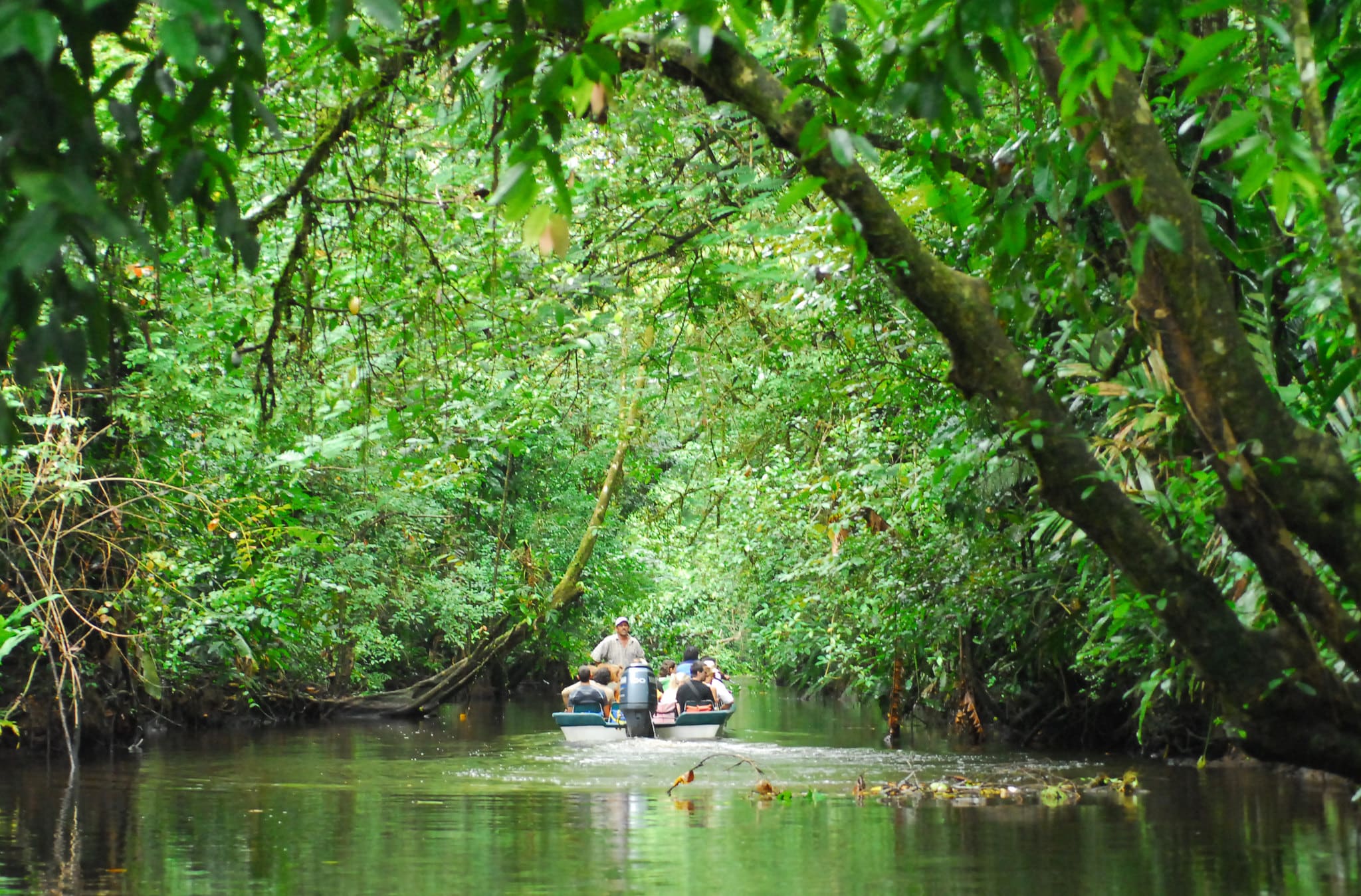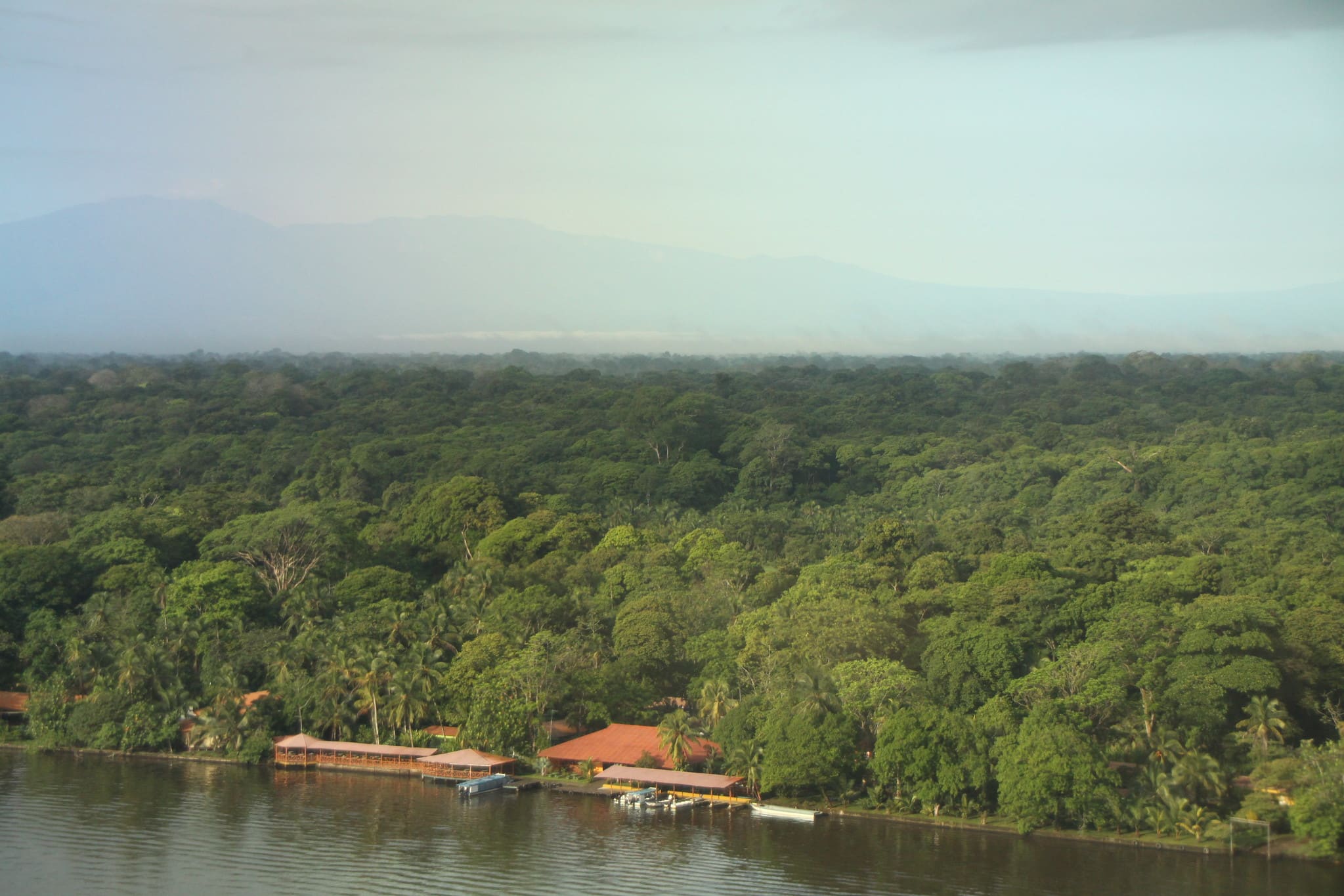Tortuguero National Park is a haven of natural wonder in the northeastern Caribbean coast of Costa Rica. Renowned for its lush rainforests, winding waterways, and pristine beaches, this ecological treasure trove offers a glimpse into one of the most biodiverse regions on the planet.
With its name translating to “Land of Turtles,” Tortuguero is a sanctuary for many wildlife species and a crucial nesting ground for endangered sea turtles.
As visitors traverse its meandering canals, immerse themselves in dense jungle trails, and witness the annual spectacle of turtle nesting, they become part of a conservation narrative that seeks to protect and preserve this invaluable ecosystem for generations.
FREE! Travel eBook to discover Costa Rica!
Grab the eBook with the exhaustive brochure for your Costa Rica Vacation All-Inclusive.
*By clicking send, you agree to receive information about products, services, promotions, or recommendations via email.
General Characteristics of Tortuguero National Park
Lo que vas a ver en este artículo
- 1 General Characteristics of Tortuguero National Park
- 2 Spotlight on Wildlife: Key Species of Tortuguero National Park
- 2.1 1. Graceful Guardians: The Green Sea Turtle (Chelonia mydas)
- 2.2 2. Elegant Navigators: The Hawksbill Sea Turtle (Eretmochelys imbricata)
- 2.3 3. Majestic Wanderers: The Loggerhead Sea Turtle (Caretta caretta)
- 2.4 4. Gentle Giants: The Leatherback Sea Turtle (Dermochelys coriacea)
- 2.5 5. Primeval Predators: The American Crocodile (Crocodylus acutus)
- 2.6 6. Elusive Royalty: The Jaguar (Panthera onca)
- 3 Tortuguero Delights: Must-See Attractions in the National Park
- 4 Hours and Price
- 5 Suggested Guidelines for a Smooth Experience
- 6 Preserving Tortuguero’s Natural Legacy
Tortuguero National Park, situated on the northeastern coast of Costa Rica, is a breathtaking testament to the country’s commitment to preserving its natural heritage. Spanning over 77,000 acres, this biodiverse wonderland encompasses diverse ecosystems, from lush rainforests to expansive wetlands and pristine beaches.
At the heart of Tortuguero National Park lies its namesake, the village of Tortuguero, which serves as the gateway to this ecological marvel.
One of the defining characteristics of Tortuguero National Park is its incredible biodiversity. Home to an impressive array of flora and fauna, the park boasts over 400 species of birds, including colorful toucans and majestic herons, making it a paradise for birdwatchers.
The park is inhabited by numerous mammal species, such as jaguars, sloths, and howler monkeys, which roam freely amidst the dense foliage.
Another distinguishing feature of Tortuguero National Park is its intricate network of waterways. Crisscrossed by meandering rivers and winding canals, the park is often called the “Amazon of Costa Rica.”
These waterways provide vital habitats for aquatic species and offer visitors the opportunity to explore the park’s remote corners by boat, immersing themselves in its pristine wilderness.
Tortuguero National Park is renowned for its role in sea turtle conservation. Every year, thousands of endangered green turtles return to the park’s beaches to nest, making it one of the most important nesting sites in the world.
Visitors to Tortuguero National Park have the rare chance to witness this awe-inspiring spectacle as female turtles emerge from the ocean under darkness to lay their eggs in the soft sand.
Spotlight on Wildlife: Key Species of Tortuguero National Park
Tortuguero National Park, located in Costa Rica, is renowned for its biodiversity, particularly its importance as a nesting site for several species of sea turtles. Here are some key species found in Tortuguero National Park:
1. Graceful Guardians: The Green Sea Turtle (Chelonia mydas)
The Green Sea Turtle, scientifically known as Chelonia mydas, is a majestic marine reptile that holds a special place in our oceans’ ecosystems. With its distinctive greenish coloration and streamlined body, it gracefully glides through the ocean waters, embodying the beauty and wonder of the underwater world.
One of the most renowned habitats for these magnificent creatures is the Tortuguero National Park, located on the northeastern coast of Costa Rica.
Within the protected confines of Tortuguero National Park, the Green Sea Turtles find sanctuary for nesting, feeding, and breeding. This expansive park, encompassing pristine beaches and mangrove forests, lagoons, and marshes, provides an ideal environment for these turtles to thrive.
The sandy shores of Tortuguero serve as vital nesting grounds, drawing female turtles from far and wide to lay their eggs in the safety of the park’s boundaries.
During nesting season, which typically spans from July to October, Tortuguero National Park becomes a bustling hub of activity as female Green Sea Turtles make their arduous journey from the depths of the ocean to the sandy shores.
Here, under the cover of night, they meticulously dig their nests and deposit their precious cargo of eggs before returning to the sea. This ancient ritual has been repeated for countless generations, contributing to the park’s significance as a crucial conservation area for these endangered reptiles.
The Hawksbill Sea Turtle, scientifically known as Eretmochelys imbricata, is another magnificent species gracing our planet’s oceans. Renowned for its strikingly beautiful shell adorned with overlapping scales, this sea turtle is a true marvel of nature.
The Hawksbill shares some similarities with its cousin, the Green Sea Turtle. One of the critical habitats for the Hawksbill Sea Turtle, just like its green counterpart, is the Tortuguero National Park, situated along the Caribbean coast of Costa Rica.
Tortuguero National Park provides essential nesting and foraging grounds for Hawksbill Sea Turtles, further solidifying its status as a haven for marine biodiversity. Within the park’s protected boundaries, Hawksbills find sanctuary along the sandy beaches, where they meticulously dig their nests and deposit their eggs during the nesting season.
The park’s remote and undisturbed beaches offer a haven for these turtles, allowing them to carry out their nesting rituals undisturbed by human interference.
Like the Green Sea Turtles, Hawksbills undertake epic migrations across vast oceanic expanses to return to their natal beaches for nesting. Tortuguero National Park is a beacon guiding these turtles back to their birthplace, where they continue the life cycle by laying their eggs in the warm sands.
Preserving these nesting sites within the park is crucial for the survival of Hawksbill Sea Turtle populations, which face numerous threats in the wild, including habitat destruction, pollution, and poaching.
3. Majestic Wanderers: The Loggerhead Sea Turtle (Caretta caretta)
The Loggerhead Sea Turtle, scientifically known as Caretta Caretta, is a formidable and iconic species that roam the world’s oceans, captivating the hearts of many with its distinctive appearance and fascinating life history.
Named for its robust head and powerful jaws, the Loggerhead is the largest hard-shelled turtle species and plays a vital role in marine ecosystems. While it ranges across oceans globally, one of its significant nesting grounds lies within the confines of Costa Rica’s Tortuguero National Park, a sanctuary for marine life along the Caribbean coast.
Tortuguero National Park is a crucial nesting site for Loggerhead Sea Turtles, drawing them back year after year to its pristine beaches to lay their eggs. The park’s remote and protected shores offer Loggerheads a haven to carry out their nesting rituals undisturbed by human interference.
During nesting season, which typically occurs from April to October, female Loggerheads emerge from the sea under cover of night to dig nests and deposit their eggs in the warm sands, continuing a timeless cycle of reproduction that has persisted for millennia.
Park authorities and conservation organizations tirelessly monitor nesting activity, protect nesting sites from disturbance, and mitigate threats such as poaching and habitat degradation.
By enforcing strict regulations and implementing educational programs, they strive to raise awareness and foster a sense of stewardship among visitors and local communities, encouraging sustainable practices that benefit turtles and their habitats.
If you want more information about Costa Rica, we invite you to read the next article: The Enigmatic Beauty of Monteverde Cloud Forest Reserve.
4. Gentle Giants: The Leatherback Sea Turtle (Dermochelys coriacea)
The Leatherback Sea Turtle, scientifically known as Dermochelys coriacea, is a magnificent and enigmatic creature that is the largest living turtle species. With its distinctive leathery shell and immense size, the Leatherback is a true marvel of evolution and a testament to the wonders of the natural world.
One of its most renowned nesting sites lies within the confines of Costa Rica’s Tortuguero National Park along the country’s picturesque Caribbean coast.
Tortuguero National Park serves as a vital sanctuary for Leatherback Sea Turtles, providing essential nesting grounds where these ancient reptiles return year after year to perpetuate the cycle of life.
The park’s remote and protected beaches offer Leatherbacks a haven to lay their eggs undisturbed by human activity. During nesting season, which typically spans from February to July, female Leatherbacks emerge from the ocean depths to meticulously excavate nests and deposit their eggs in the warm sands, continuing a timeless ritual repeated for millions of years.
Conservation efforts within Tortuguero National Park are paramount in ensuring the survival of Leatherback Sea Turtle populations. Park authorities and conservation organizations tirelessly monitor nesting activity, protect nesting sites from disturbance, and mitigate threats such as poaching, predation, and habitat degradation.
5. Primeval Predators: The American Crocodile (Crocodylus acutus)
The American Crocodile, scientifically known as Crocodylus acutus, is a formidable reptile that inhabits the coastal regions of the Americas, including parts of the Caribbean and Central America.
Renowned for its prehistoric appearance and powerful jaws, the American Crocodile is an apex predator that plays a crucial role in maintaining the balance of ecosystems within its range.
The American Crocodile can also be found in brackish and saltwater environments, including the coastal areas near Tortuguero National Park in Costa Rica.
Tortuguero National Park is a vital habitat for the American Crocodile, providing abundant food sources and suitable nesting sites within its diverse ecosystems. The park’s extensive network of mangrove forests, estuaries, and lagoons offers ideal conditions for crocodiles to thrive, with ample prey such as fish, crustaceans, and small mammals abundant in its waters.
The crocodiles play a crucial role in these ecosystems, regulating prey populations and contributing to nutrient cycling through their feeding habits.
The American Crocodiles are predominantly freshwater inhabitants, and they are known to venture into coastal areas, including the beaches of Tortuguero National Park, in search of food and suitable nesting sites.
During the nesting season, which typically occurs from January to April, female crocodiles may excavate nests along the sandy shores of the park’s coastline, laying their eggs in the warm sands before returning to the safety of the water.
6. Elusive Royalty: The Jaguar (Panthera onca)
The Jaguar, scientifically known as Panthera onca, is a magnificent and elusive big cat that stalks the dense jungles and rugged landscapes of Central and South America.
Renowned for its sleek golden coat adorned with distinctive rosette patterns, the Jaguar reigns as the largest feline in the Americas and holds a place of reverence in indigenous cultures as a symbol of strength and power.
The Jaguar also roams the diverse ecosystems of Costa Rica, including the pristine habitats of Tortuguero National Park along the country’s Caribbean coast.
Tortuguero National Park is a vital refuge for Jaguars, providing a vast expanse of protected wilderness where these apex predators can roam freely. The park’s dense rainforests, winding rivers, and marshy wetlands offer ample prey and suitable habitat for Jaguars to thrive.
Within the confines of Tortuguero, Jaguars play a crucial role in regulating prey populations, maintaining ecosystem balance, and contributing to the overall health of the region’s biodiversity.
Jaguars are primarily solitary animals, and they are known to traverse large territories in search of food, water, and suitable hunting grounds. Tortuguero National Park offers an ideal environment for Jaguars to pursue their elusive prey, which includes a variety of mammals, birds, and reptiles found within the park’s lush forests and waterways.
These are just a few examples of the diverse wildlife found in Tortuguero National Park, making it a significant ecological treasure in Costa Rica.
If you want to know more information, visit the official website of the National System of Conservation Areas.
Tortuguero Delights: Must-See Attractions in the National Park
When venturing into Tortuguero National Park, visitors encounter many must-see attractions that showcase the park’s unparalleled natural beauty and biodiversity. One of the most iconic attractions of Tortuguero National Park is its expansive waterways, which meander through lush rainforests and pristine wetlands.
Exploring these winding canals by boat or kayak offers visitors a unique perspective of Tortuguero National Park, immersing them in its tranquil surroundings while encountering an array of wildlife, from exotic birds to elusive caimans.
For wildlife enthusiasts, a visit to Tortuguero National Park would not be complete without witnessing the awe-inspiring spectacle of sea turtle nesting. Tortuguero’s beaches serve as crucial nesting grounds for several species of sea turtles, including the endangered green turtle.
Each year, thousands of female turtles return to the shores of Tortuguero National Park to lay their eggs, an ancient ritual that has been taking place for centuries.
Witnessing these gentle giants emerge from the ocean under the cloak of night to begin their nesting journey is a truly unforgettable experience that highlights the conservation importance of Tortuguero National Park.
Another must-see attraction in Tortuguero National Park is its rich and diverse array of flora and fauna. From towering trees to vibrant tropical flowers, the park’s rainforests are teeming with life at every turn.
Guided hikes along the park’s network of trails allow visitors to observe various plant and animal species, including howler monkeys, sloths, and colorful toucans.
These encounters provide valuable insights into the intricate ecological relationships within Tortuguero National Park, underscoring the importance of preserving its delicate ecosystem for future generations.
Hours and Price
Our operating hours are from 6 am to 12 pm and from 1 pm to 4 pm daily.
Regarding rates, the fees are as follows: For Costa Rican nationals and residents, adults pay ¢1,000, and children pay ¢500. Adults pay $15 for foreign non-residents, while children pay $5.
Payment can be made in US Dollars ($) or Costa Rican Colones (¢). Please note that only bills in good condition are accepted, and we do not accept $100 or ¢50,000 bills. We accept all major credit and debit cards through DATAFONO.
If you are a foreigner, please ensure you inform your bank before using your card outside your home country.
Suggested Guidelines for a Smooth Experience
Tortuguero National Park is a haven for biodiversity enthusiasts and nature lovers. Its lush rainforests, winding waterways, and pristine beaches offer a glimpse into the rich tapestry of life thriving within its boundaries.
This national park is a prime destination for those seeking an immersive adventure in one of Central America’s most ecologically diverse regions. Whether you’re an avid birder, an intrepid explorer, or someone yearning for a serene escape into nature’s embrace, this park promises an unforgettable experience.
A visit to Tortuguero National Park would be incomplete without partaking in the mesmerizing spectacle of sea turtle nesting. From March to October, several species of sea turtles, including the endangered green sea turtle, return to the park’s shores to lay their eggs.
Witnessing these ancient creatures emerge from the ocean’s depths to fulfill their timeless ritual is a truly humbling experience. Rangers lead guided nighttime tours, allowing visitors to observe this awe-inspiring event while ensuring minimal disturbance to the nesting turtles.
Exploring Tortuguero’s intricate network of waterways by boat is a must-do activity. Traverse the meandering rivers and canals, flanked by towering trees and vibrant foliage, as you venture deep into the heart of the rainforest.
Keep your eyes peeled for the diverse wildlife that calls this park home, from elusive jaguars and playful river otters to colorful toucans and majestic howler monkeys. Guided boat tours provide invaluable insights into the park’s ecology and allow for up-close encounters with its inhabitants, making for an enriching and educational experience.
Preserving Tortuguero’s Natural Legacy
You cannot miss visiting Tortuguero National Park in your Costa Rica vacation all-inclusive. From the ancient ritual of sea turtle nesting to the tranquil meanderings of its waterways, this Costa Rican gem invites adventurers to immerse themselves in its biodiverse wonders.
Tortuguero offers an unforgettable journey into the heart of nature, whether you’re drawn to the thrill of wildlife encounters, the serenity of camping beneath starlit skies, or the profound beauty of untouched landscapes.
So come, wander its paths, and let the magic of Tortuguero ignite your spirit and leave an indelible mark on your soul.
If you want more information about Costa Rica, we invite you to read the next article: Biodiversity Marvel: Exploring Corcovado National Park.
